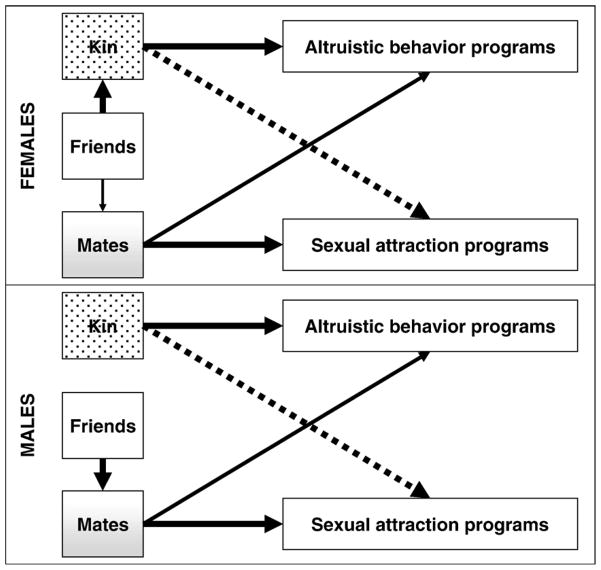Fig. 3.
A model of close relationships involving shared mechanisms. This model conceptualizes women’s interactions with friends as activating other close relationship modules (kinship most strongly), which, in turn, regulate general programs related to altruistic behavior and sexual attraction. For men, the process is similar, though interactions with friends are not presumed to activate a kin module. Positive associations are again indicated by solid paths and negative associations by dotted paths, with the thickness of path lines indicating relative strength of association.

